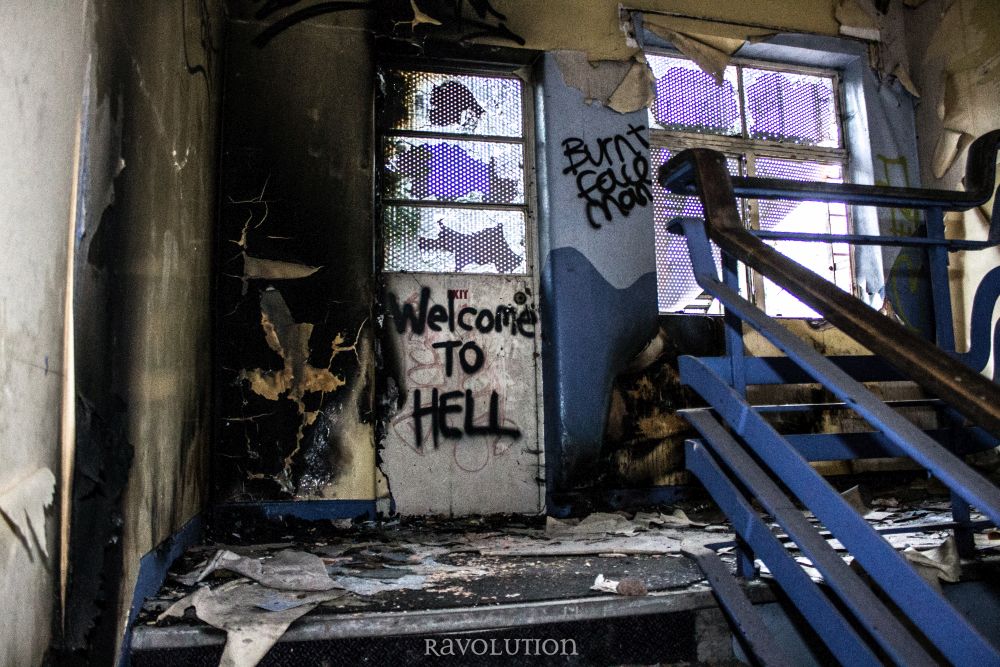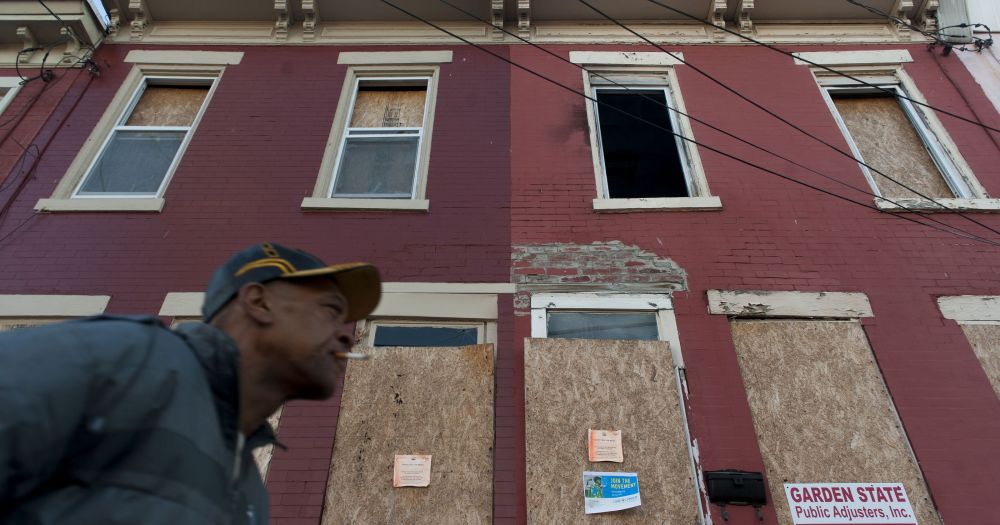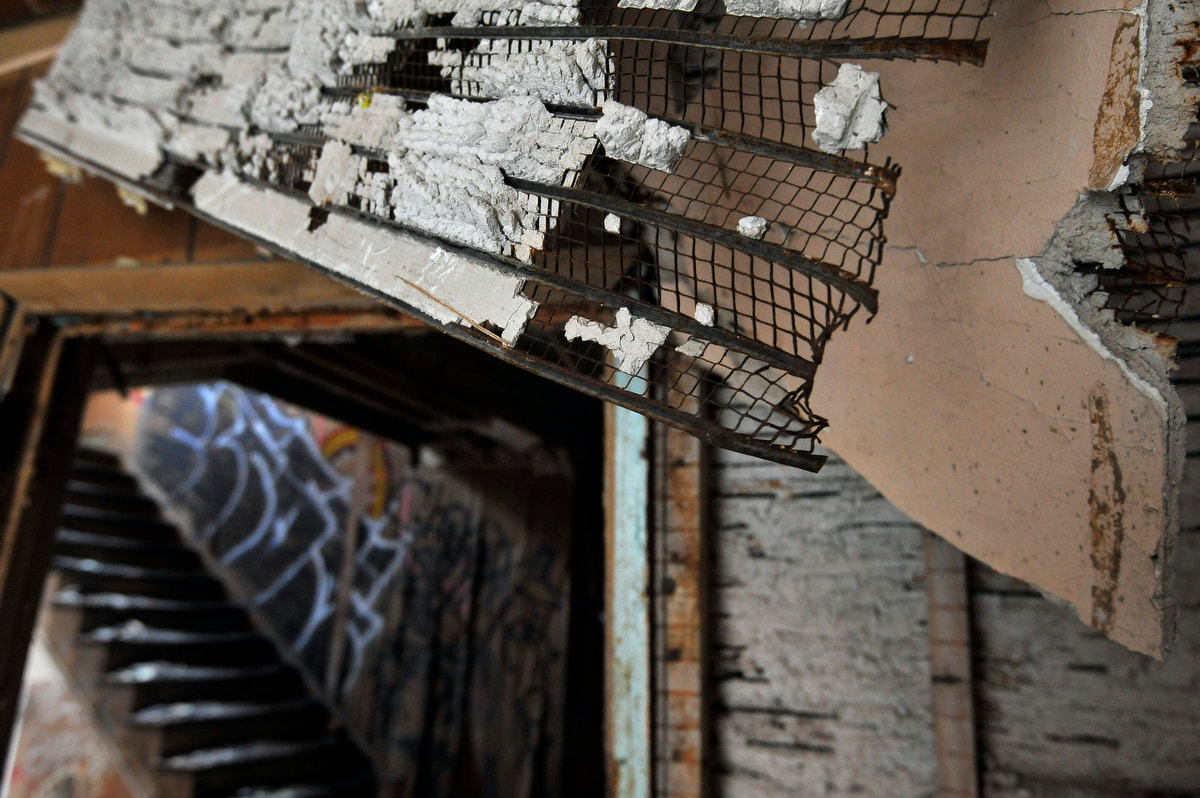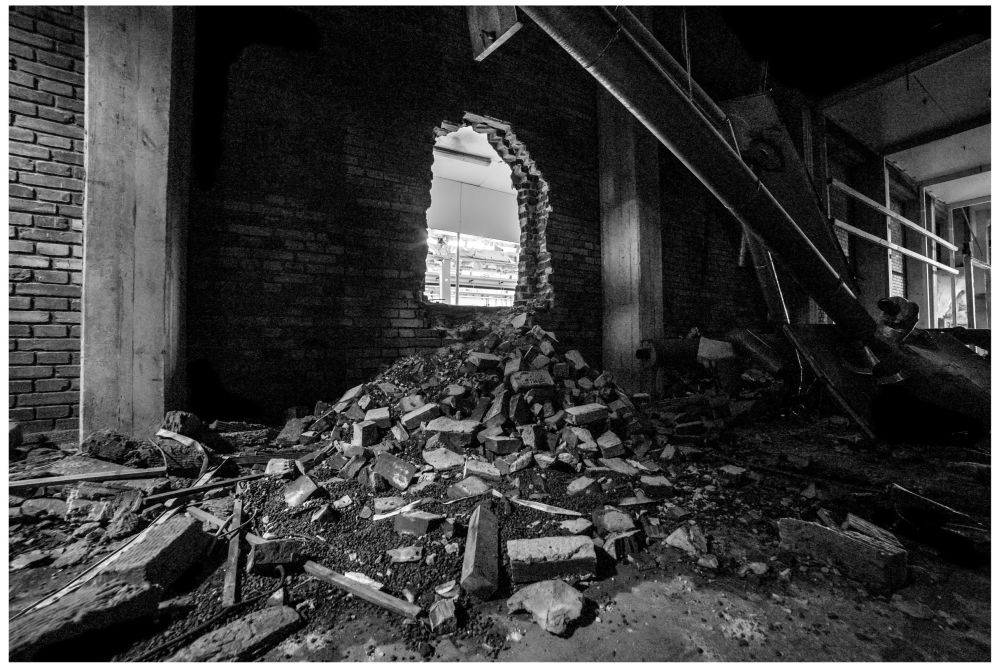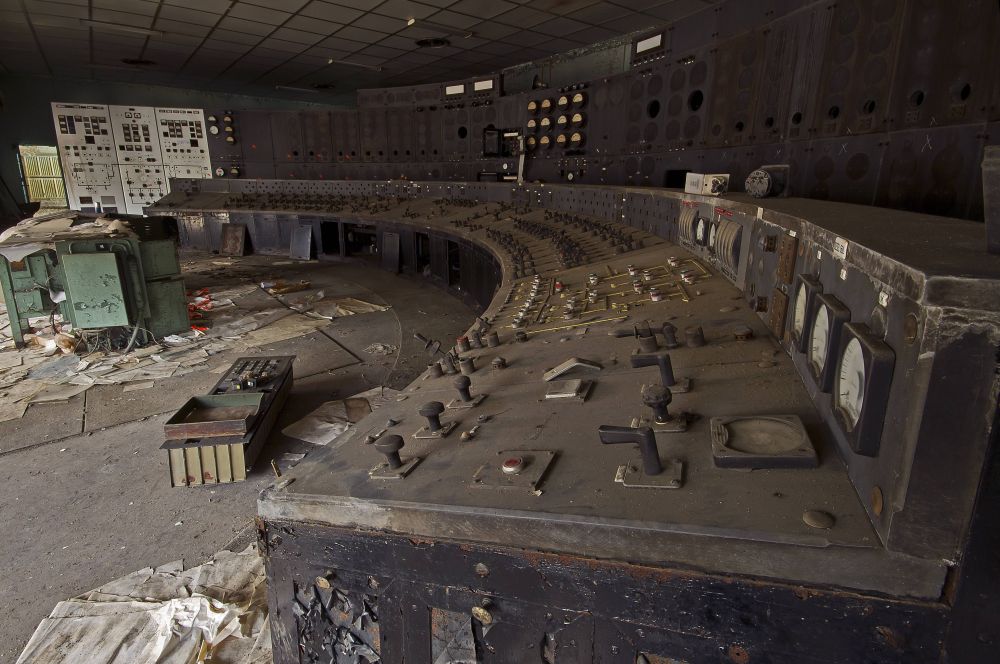- Home
- Magazines
-
Newsletters
- 19 July 2024
- 12 July 2024
- 5 July 2024
- 28 June 2024
- 14 June 2024
- 7 June 2024
- 31 May 2024
- 24 May 2024
- 17 May 2024
- 10 May 2024
- 3 May 2024
- 26 April 2024
- 19 April 2024
- 12 April 2024
- 22 March 2024
- 15 March 2024
- 8 March 2024
- 1 March 2024
- 23 February 2024
- 16 February 2024
- 9 February 2024
- 26 January 2024
- 19 January 2024
- 12 January 2024
- 22 December 2023
- 1 December 2023
- 24 November 2023
- 10 November 2023
- 3 November 2023
- 27 October 2023
- 20 October 2023
- 13 October 2023
- 6 October 2023
- 29 September 2023
- 22 September 2023
- 15 September 2023
- 8 September 2023
- 25 August 2023
- 18 August 2023
- 11 August 2023
- 4 August 2023
- 28 July 2023
- 21 July 2023
- 14 July 2023
- 7 July 2023
- 30 June 2023
- 23 June 2023
- 15 June 2023
- 2 June 2023
- 26 May 2023
- 19 May 2023
- 12 May 2023
- 5 May 2023
- 28 April 2023
- 21 April 2023
- 14 April 2023
- 6 April 2023
- 31 March 2023
- 24 March 2023
- 17 March 2023
- 10 March 2023
- 3 March 2023
- 24 February 2023
- 17 February 2023
- 10 February 2023
- 3 February 2023
- 27 January 2023
- 13 January 2023
- 22 December 2022
- 15 December 2022
- 9 December 2022
- 2 December 2022
- 25 November 2022
- 18 November 2022
- 11 November 2022
- 4 November 2022
- Advertising
- Subscribe
- Articles
-
Galleries
- AOSH Firexpo 2024
- Midvaal Fit to Fight Fire 2024
- WoF KNP 2023 Gallery
- TFA 2023 Gallery
- DMISA Conference 2023
- ETS 2023 Gallery
- Drager Fire Combat and Rescue Challenge 2023
- AOSH Firexpo 2023
- Midvaal Fit to Fight Fire
- WC IFFD 2023
- NMU 13th Fire Management Symposium 2022
- JOIFF Africa Conference 2022
- ETS 2022 Gallery
- TFA 2022 Gallery
- IFFD 2018
- SAESI
- TFA
- WRC 2018
- WRC 2019
- A-OSH/Securex
- IFE AGM 2019
- ETS Ind Fire Comp Nov 2019
- ETS Challenge 2021
- Drager launch
- Drager Fire Combat and Rescue Challenge 2022
- TFA
- Contact
- Home
- Magazines
-
Newsletters
- 19 July 2024
- 12 July 2024
- 5 July 2024
- 28 June 2024
- 14 June 2024
- 7 June 2024
- 31 May 2024
- 24 May 2024
- 17 May 2024
- 10 May 2024
- 3 May 2024
- 26 April 2024
- 19 April 2024
- 12 April 2024
- 22 March 2024
- 15 March 2024
- 8 March 2024
- 1 March 2024
- 23 February 2024
- 16 February 2024
- 9 February 2024
- 26 January 2024
- 19 January 2024
- 12 January 2024
- 22 December 2023
- 1 December 2023
- 24 November 2023
- 10 November 2023
- 3 November 2023
- 27 October 2023
- 20 October 2023
- 13 October 2023
- 6 October 2023
- 29 September 2023
- 22 September 2023
- 15 September 2023
- 8 September 2023
- 25 August 2023
- 18 August 2023
- 11 August 2023
- 4 August 2023
- 28 July 2023
- 21 July 2023
- 14 July 2023
- 7 July 2023
- 30 June 2023
- 23 June 2023
- 15 June 2023
- 2 June 2023
- 26 May 2023
- 19 May 2023
- 12 May 2023
- 5 May 2023
- 28 April 2023
- 21 April 2023
- 14 April 2023
- 6 April 2023
- 31 March 2023
- 24 March 2023
- 17 March 2023
- 10 March 2023
- 3 March 2023
- 24 February 2023
- 17 February 2023
- 10 February 2023
- 3 February 2023
- 27 January 2023
- 13 January 2023
- 22 December 2022
- 15 December 2022
- 9 December 2022
- 2 December 2022
- 25 November 2022
- 18 November 2022
- 11 November 2022
- 4 November 2022
- Advertising
- Subscribe
- Articles
-
Galleries
- AOSH Firexpo 2024
- Midvaal Fit to Fight Fire 2024
- WoF KNP 2023 Gallery
- TFA 2023 Gallery
- DMISA Conference 2023
- ETS 2023 Gallery
- Drager Fire Combat and Rescue Challenge 2023
- AOSH Firexpo 2023
- Midvaal Fit to Fight Fire
- WC IFFD 2023
- NMU 13th Fire Management Symposium 2022
- JOIFF Africa Conference 2022
- ETS 2022 Gallery
- TFA 2022 Gallery
- IFFD 2018
- SAESI
- TFA
- WRC 2018
- WRC 2019
- A-OSH/Securex
- IFE AGM 2019
- ETS Ind Fire Comp Nov 2019
- ETS Challenge 2021
- Drager launch
- Drager Fire Combat and Rescue Challenge 2022
- TFA
- Contact
|
28 July 2023
|
Featured FRI Magazine article: Fires in vacant and abandoned buildings - taking the risk when it's needed by Colin Deiner (FRI Vol 4 No 1)
https://www.frimedia.org/uploads/1/2/2/7/122743954/colin-vol4-no1.pdf
This week’s featured Fire and Rescue International magazine article is: Fires in vacant and abandoned buildings - taking the risk when it's needed, written by Colin Deiner (FRI Vol 4 No 1)We will be sharing some technical articles from Fire and Rescue International magazine on a weekly basis with our readers to assist in technology transfer. This will hopefully create an increased awareness, providing you with hands-on advice and guidance. All our magazines are available free of charge in PDF format on our website and online at ISSUU. We also provide all technical articles as a free download in our article archive on our website.
Fires in vacant and abandoned buildings – taking the risk when it’s needed
By Colin Deiner, chief director, disaster management and fire brigade services, Western Cape Government
The downturn in the economy has many casualties. One of these is the increase in the number of buildings being abandoned by their owners. Most of these are commercial structures that had previously been used for manufacture and storage of various goods. In many of these cases the buildings where abandoned without much rehabilitation of any hazardous contents that may still have been inside them or service piping and other safety risks that may have been in place.
Another negative result of the downturn is the increased migration of people from poverty stricken rural areas to cities. Large numbers of these people do not have access to housing and then seek shelter anywhere they can find; on many occasions they end up in abandoned buildings. With no fire safety or any other security systems in place, these desperate people take their own security measures, often with devastating consequences in the event of a fire.
Vacant building types
Virtually all buildings are at a risk of being abandoned and standing vacant for an unspecified (and sometimes extended period) period. The three most common buildings that are periodically left abandoned are large volume industrial manufacturing and storage structures, medium to high rise office structures and residential dwellings.
I recall having an office in Johannesburg across from an abandoned office block some years ago. This seven-storey structure had been invaded by a large number of people who turned the office areas into living spaces. To achieve some sort of privacy they used blankets, curtains and plastic sheeting rigged with wire or rope at various heights throughout the building. These ‘separating elements’ would often lead to the lighting system being obscured and to address this problem they would run electrical wiring from the power system to their own little enclaves. A particularly hazardous condition developed in the lift shaft that had long since stopped operating and was now being used as a rather large rubbish disposal. In a similar building I once inspected the rubbish had already piled up to the sixth floor. Despite the huge fire hazard this poses, one can only imagine the massive prevailing health hazard.
At some stage the authorities decided to evict all occupants from the structure and seal all entrance points and windows up in order to prevent any future occupation. One early morning I noticed a few of the bricks at a point at the bottom of the building being displaced from the inside. Shortly thereafter I counted more than a hundred people exiting through this opening. Problem: you know have an added challenge of NO escape routes for occupants if the building catches fire.
In buildings like this, no matter where they are located, there is often also a major crime risk. It is therefore very difficult for fire inspectors to enter these premises and many times they can only enter under police protection.
The objectives of this article are not to lay blame on any authorities or recommend measures to prevent their illegal occupation. The objective here is to provide some thoughts on the management of emergency operations in these buildings.
Hazards
The four main universal hazards of abandoned buildings are:
Risk versus reward
The City of Phoenix, Arizona, has an important preamble in their standard operating procedure on fighting fires in unoccupied structures:
These rules, I believe, should be uppermost in the minds of all incident commanders responding to fires in vacant buildings. We should, however, not allow every vacant building to burn down just because there are no saveable lives inside. It is expected of fire services to bring enough water and people to a fire to enable them to extinguish it. What is critical is that a thorough risk assessment be made of all fires in abandoned buildings before committing resources into high risk situations.
If as incident commander you have no evidence of possible occupation of an abandoned structure, it is not advisable to commit resources into the interior of the structure. However, always look for clues. Deploy someone to speak to the bystanders. If there is sufficient evidence to suggest that people might be somewhere in the structure and the risk is acceptable then it will be required of the fire department to search the building and effect any possible rescues.
An important clue as to whether a ‘vacant’ building is occupied might be an appreciation of the cause of the fire. If the fire was started by candles or heating equipment the chances are that someone is still in there. Arson might be a sign of some act of revenge and could be aimed at someone inside the building. Using thermal imaging cameras will assist greatly in identifying possible entrapped occupants but also the source and origin of the fire.
There are other, more obvious, signs that seemingly abandoned buildings are in fact, occupied. Look for washing hanging in or around the building, improvised living areas, illegal electrical fittings, water buckets and portable ablution devices. Even television sets and satellite dishes might be present.
Also look at the location of the structure. If it located near an informal settlement or within an inner city zone that is heavily populated, the chances are almost certain that the abandoned structure will be populated.
A well-involved building would likely represent a zero survivability profile. Similar conditions in an abandoned building would indicate limited survivability and virtually no property that may be saved. If the fire intensity is of such a nature that your fire fighters can’t enter without full personal protective equipment (PPE) and breathing apparatus, the chances of anyone surviving is remote.
Preplanning
Because it is difficult to continuously keep tabs on which buildings are being vacated, it might be really difficult to keep tabs on every vacant building in your response area. Abandoned inner city structures such as those I mentioned above would have been in existence for a while. Obviously, it would be better to act immediate when ‘high-rise slums’ are encountered and try to have the building evacuated, however, it might not be as easy as we might imagine. A number of legal challenges and social resistance to such an eviction might make it difficult. While making every effort to keep people safe and that usually means getting them out of the building, it would be advisable to develop an effective response plan.
Not all buildings will be abandoned for an extended period. You might encounter a business that has been recently discontinued, which may still have all its electricity and water fittings and may still contain a large amount of stock or manufacturing machinery. This could all add to the fire load and present additional hazards such as high-rack storage.
Fire fighting
Your strategy and tactics will mainly depend on the type of structure involved.
If you are called to a large volume commercial warehouse or factory type structure, you should be able to determine relatively easily if it is occupied or not. Any occupants would normally be found in smaller storerooms or offices located within the structure, generally constructed around the sides. A thorough scan of the inside of the structure with a thermal imaging device could confirm the presence (or absence) of any occupants. If the fire is confined to a small part of the interior and there is no structural collapse risk, it might be possible to quickly extinguish it with a few attack lines. Beware here of the existence of any hazardous materials (hazmat) that might have remained after the business was discontinued. The golden rule of hazmat, “If you don’t know. Don’t go. Because it might blow.” is as relevant here as anywhere. Possible hazardous materials that could be encountered here could include gas cylinders, corrosive cleaning agents and other toxic substances. More on this later.
If the structure is fully involved, it is best to go defensive. In such a case it probably will not be possible to save much of the structure. Surround and drown might be the only game in town. It will generally require large water volumes and several master streams. This might be a problem in an area that has not supported industry for a while, if the water mains system has not been maintained. A sudden surge of increased water pressure in such an area could disturb any debris in the water mains, which could cause damage to your fire water supply system.
Depending on the age and condition of the structure, you will also have to consider the possibility of collapsing roofs and walls. Ensure that all exterior units are set-up outside any potential collapse zones.
Abandoned single occupancy dwellings should present the same challenges as an occupied dwelling. However, the neglect and vandalism to which it was exposed will increase the risk to fire fighters. A standard two engine and one ladder truck response should provide you with enough resources to conduct either an interior (offensive) or exterior (defensive) attack.
If it is certain or you have sufficient proof that people might be trapped inside the dwelling, the incident commander must do an immediate assessment of the prevailing hazards and then make a rapid decision to deploy a search and rescue operation supported by a balanced fire attack. This last point is important. A balanced attack is when a fast interior fire suppression operation is supported by fire fighters providing effective ventilation and ensuring an unimpeded entry and escape route for the nozzle team. The nozzle team’s first and most important task (after their own safety) is to locate and rescue inhabitants. This is greatly helped by reaching the seat of the fire and removing the smoke and heat from the structure. A separate search and rescue crew can be deployed but bear in mind that they will need the protection of a hose team as they move through the building. Staffing challenges might necessitate you to deploy your attack team as a search and rescue team. If a dwelling’s openings has been boarded up by timber or any other materials, they must be carefully removed to ensure sufficient ventilation. Crews removing this boarding should know what the fire conditions on the other side of the structure are to prevent the possibility of a backdraft occurring.
If the structure is protected by security bars, they need to be removed by the exterior crews (truck company) who should move in unison with the interior crews. This will allow the search and rescue crew to remove any found victims through the closest window or to use it as an escape route wen conditions go south.
The nightmare of the ‘high-rise slum’ is probably one that no incident commander would ever want to experience. Such an incident happening at night would be compounded by the increased occupancy of the structure as well as the lack of lighting. In such a fire you will know, you will have a lot of victims. Upon arrival at such a fire, your most important and first objective will be rescue. The best way to achieve evacuation would be to try and place protective water curtains between the fire and any identified escape routes. Due to you not having done a prefire inspection of the structure, you will have to identify these areas on the fly. Make sure that you have additional staff who can be deployed to coordinate and supervise the evacuation. It might be necessary for your attack teams to advance onto the fire and move it back to a point where it can be controlled sufficiently enough so that people can move past it.
Smoke will definitely be a challenge and therefore it will be important to deploy enough positive pressure ventilators early. In so doing you will be able to guide the smoke to areas where it could be less of a hazard to escaping occupants. You might need more than your standard tools to make ventilation openings, especially if as mentioned earlier the openings have been sealed off with bricks and mortar. If it is possible to evacuate occupants, try to get as many of them out as you can. You will then need to conduct a thorough search and rescue operation to find any victims who might have been injured or overcome by the smoke and fire. There might also be people who could be trapped in parts of the structure that will require breaking or cutting to free them. Ensure that you have the right forcible entry tools available to do this. Also make sure you have experienced personnel doing these tasks.
When committing crews to the interior of the structure, bear in mind that it would probably (almost certainly) not have been maintained for an extended period. This could mean that interior crews could be confronted with the hazard of unstable walls, rotting roof structures, unprotected electricity connections and, in older buildings, collapsing staircases. Fire fighters need to take care to ensure that they proceed with extreme caution through the building and that they are in a safe space with a secure footing at all times. Any rescue activities must be performed from such a space and should it be necessary to reach a victim in an unsafe location the rescuer must be anchored to a stable platform.
A standby rescue crew should be on standby at all times to react quickly to any fire crew distress call. All crews inside the structure must be accounted for at all times. Especially when you are working in a building such as this, your path of entry and egress must be carefully noted to ensure that you are able to exit the building within the minimum safe duration permitted by your breathing apparatus.
The hazmat risk
The presence of hazardous materials will always be a consideration for any crews responding to incidents in abandoned and vacant buildings.
Abandoned houses or apartments are often used by gangs or drug-users (particularly in urban areas) and various paraphernalia such as contaminated needles and shattered vials could be lying around the rooms.
Abandoned buildings on farms or in rural areas could also be home to a variety of wildlife that could range from poisonous snakes to some particularly nasty members of the extended cat family. Although not a hazmat risk, these animals could cause serious injury or even kill unsuspecting fire fighters and it might be necessary to have your local animal welfare specialist’s contact numbers handy.
As mentioned previously, abandoned factories could still have toxic or corrosive waste products inside them. These could either be in the form of stock that was never removed or liquids never purged from pipelines within the process areas. Also remember that certain hazardous materials might have had a long-term corrosive effect on structural elements that could cause them to weaken and collapse. Underground storage tanks can also leak hazardous materials into groundwater.
When a structure has been purposely set alight, a range of accelerants could have been used that will pose an unreasonable and unexpected threat to responding fire crews. If a fire in an abandoned or vacant structure was caused deliberately, the chances are good that it will be considered a crime scene. Then, as in any crime scene, fire services need to make every possible effort to protect any evidence while still doing their jobs. It is always good for the incident commander to work closely with a police representative to ensure that evidence in specific areas of interest to them is protected as far as possible.
Although it doesn’t fall within the scope of this article, fire services in certain parts of the country often respond to incidents in abandoned mines and mines buildings. Apart from these places also being a living space for vagrants and drug-users, old mines may contain radioactive materials and/or abandoned explosives.
Deep vertical shafts are susceptible to cave-ins and collapse and the air in mines can contain invisible and odourless gasses such as methane, carbon monoxide and hydrogen sulphide that are lethal.
Water-filled quarry pits and sediment ponds are often very deep and in the winter season may contain contaminated and icy water. The edges may also very slippery and steep.
In closing
Incident commanders have a huge responsibility when committing crews into structures that pose the risks mentioned in this article. When deciding on an interior attack, the following precautions must be implemented:
When an exterior attack is decided upon, a command priority should be to implement measures aimed at protecting crews and apparatus from structural collapse and the ensuring of a sustained water supply not only for the involved structure but also to protect any neighbouring exposures.
Note: I wish to dedicate this article to the late Willie Barker. A great officer from the City of Johannesburg, who made a massive contribution to the service in South Africa over a career spanning four decades. It was Willie who first showed me the ‘high rise slums’ and worked tirelessly to find a solution to the scourge. I hope I have done his work justice by reflecting some of it here.
This week’s featured Fire and Rescue International magazine article is: Fires in vacant and abandoned buildings - taking the risk when it's needed, written by Colin Deiner (FRI Vol 4 No 1)We will be sharing some technical articles from Fire and Rescue International magazine on a weekly basis with our readers to assist in technology transfer. This will hopefully create an increased awareness, providing you with hands-on advice and guidance. All our magazines are available free of charge in PDF format on our website and online at ISSUU. We also provide all technical articles as a free download in our article archive on our website.
Fires in vacant and abandoned buildings – taking the risk when it’s needed
By Colin Deiner, chief director, disaster management and fire brigade services, Western Cape Government
The downturn in the economy has many casualties. One of these is the increase in the number of buildings being abandoned by their owners. Most of these are commercial structures that had previously been used for manufacture and storage of various goods. In many of these cases the buildings where abandoned without much rehabilitation of any hazardous contents that may still have been inside them or service piping and other safety risks that may have been in place.
Another negative result of the downturn is the increased migration of people from poverty stricken rural areas to cities. Large numbers of these people do not have access to housing and then seek shelter anywhere they can find; on many occasions they end up in abandoned buildings. With no fire safety or any other security systems in place, these desperate people take their own security measures, often with devastating consequences in the event of a fire.
Vacant building types
Virtually all buildings are at a risk of being abandoned and standing vacant for an unspecified (and sometimes extended period) period. The three most common buildings that are periodically left abandoned are large volume industrial manufacturing and storage structures, medium to high rise office structures and residential dwellings.
I recall having an office in Johannesburg across from an abandoned office block some years ago. This seven-storey structure had been invaded by a large number of people who turned the office areas into living spaces. To achieve some sort of privacy they used blankets, curtains and plastic sheeting rigged with wire or rope at various heights throughout the building. These ‘separating elements’ would often lead to the lighting system being obscured and to address this problem they would run electrical wiring from the power system to their own little enclaves. A particularly hazardous condition developed in the lift shaft that had long since stopped operating and was now being used as a rather large rubbish disposal. In a similar building I once inspected the rubbish had already piled up to the sixth floor. Despite the huge fire hazard this poses, one can only imagine the massive prevailing health hazard.
At some stage the authorities decided to evict all occupants from the structure and seal all entrance points and windows up in order to prevent any future occupation. One early morning I noticed a few of the bricks at a point at the bottom of the building being displaced from the inside. Shortly thereafter I counted more than a hundred people exiting through this opening. Problem: you know have an added challenge of NO escape routes for occupants if the building catches fire.
In buildings like this, no matter where they are located, there is often also a major crime risk. It is therefore very difficult for fire inspectors to enter these premises and many times they can only enter under police protection.
The objectives of this article are not to lay blame on any authorities or recommend measures to prevent their illegal occupation. The objective here is to provide some thoughts on the management of emergency operations in these buildings.
Hazards
The four main universal hazards of abandoned buildings are:
- Poor structural integrity
- Advanced fire conditions due to the use of flammable materials for occupancy separation by illegal occupants
- Use of flammable substances by illegal occupants
- Large amounts of trash and debris
- Entanglement and entrapment hazards
- Poor to non-existent ventilation conditions
Risk versus reward
The City of Phoenix, Arizona, has an important preamble in their standard operating procedure on fighting fires in unoccupied structures:
- We will risk our lives a lot, in a highly calculated and controlled manner, to protect a saveable human life
- We will risk our lives a little, in a highly calculated and controlled manner, to protect saveable property
- We will not risk our lives at all to protect lives or property that are already lost
These rules, I believe, should be uppermost in the minds of all incident commanders responding to fires in vacant buildings. We should, however, not allow every vacant building to burn down just because there are no saveable lives inside. It is expected of fire services to bring enough water and people to a fire to enable them to extinguish it. What is critical is that a thorough risk assessment be made of all fires in abandoned buildings before committing resources into high risk situations.
If as incident commander you have no evidence of possible occupation of an abandoned structure, it is not advisable to commit resources into the interior of the structure. However, always look for clues. Deploy someone to speak to the bystanders. If there is sufficient evidence to suggest that people might be somewhere in the structure and the risk is acceptable then it will be required of the fire department to search the building and effect any possible rescues.
An important clue as to whether a ‘vacant’ building is occupied might be an appreciation of the cause of the fire. If the fire was started by candles or heating equipment the chances are that someone is still in there. Arson might be a sign of some act of revenge and could be aimed at someone inside the building. Using thermal imaging cameras will assist greatly in identifying possible entrapped occupants but also the source and origin of the fire.
There are other, more obvious, signs that seemingly abandoned buildings are in fact, occupied. Look for washing hanging in or around the building, improvised living areas, illegal electrical fittings, water buckets and portable ablution devices. Even television sets and satellite dishes might be present.
Also look at the location of the structure. If it located near an informal settlement or within an inner city zone that is heavily populated, the chances are almost certain that the abandoned structure will be populated.
A well-involved building would likely represent a zero survivability profile. Similar conditions in an abandoned building would indicate limited survivability and virtually no property that may be saved. If the fire intensity is of such a nature that your fire fighters can’t enter without full personal protective equipment (PPE) and breathing apparatus, the chances of anyone surviving is remote.
Preplanning
Because it is difficult to continuously keep tabs on which buildings are being vacated, it might be really difficult to keep tabs on every vacant building in your response area. Abandoned inner city structures such as those I mentioned above would have been in existence for a while. Obviously, it would be better to act immediate when ‘high-rise slums’ are encountered and try to have the building evacuated, however, it might not be as easy as we might imagine. A number of legal challenges and social resistance to such an eviction might make it difficult. While making every effort to keep people safe and that usually means getting them out of the building, it would be advisable to develop an effective response plan.
Not all buildings will be abandoned for an extended period. You might encounter a business that has been recently discontinued, which may still have all its electricity and water fittings and may still contain a large amount of stock or manufacturing machinery. This could all add to the fire load and present additional hazards such as high-rack storage.
Fire fighting
Your strategy and tactics will mainly depend on the type of structure involved.
If you are called to a large volume commercial warehouse or factory type structure, you should be able to determine relatively easily if it is occupied or not. Any occupants would normally be found in smaller storerooms or offices located within the structure, generally constructed around the sides. A thorough scan of the inside of the structure with a thermal imaging device could confirm the presence (or absence) of any occupants. If the fire is confined to a small part of the interior and there is no structural collapse risk, it might be possible to quickly extinguish it with a few attack lines. Beware here of the existence of any hazardous materials (hazmat) that might have remained after the business was discontinued. The golden rule of hazmat, “If you don’t know. Don’t go. Because it might blow.” is as relevant here as anywhere. Possible hazardous materials that could be encountered here could include gas cylinders, corrosive cleaning agents and other toxic substances. More on this later.
If the structure is fully involved, it is best to go defensive. In such a case it probably will not be possible to save much of the structure. Surround and drown might be the only game in town. It will generally require large water volumes and several master streams. This might be a problem in an area that has not supported industry for a while, if the water mains system has not been maintained. A sudden surge of increased water pressure in such an area could disturb any debris in the water mains, which could cause damage to your fire water supply system.
Depending on the age and condition of the structure, you will also have to consider the possibility of collapsing roofs and walls. Ensure that all exterior units are set-up outside any potential collapse zones.
Abandoned single occupancy dwellings should present the same challenges as an occupied dwelling. However, the neglect and vandalism to which it was exposed will increase the risk to fire fighters. A standard two engine and one ladder truck response should provide you with enough resources to conduct either an interior (offensive) or exterior (defensive) attack.
If it is certain or you have sufficient proof that people might be trapped inside the dwelling, the incident commander must do an immediate assessment of the prevailing hazards and then make a rapid decision to deploy a search and rescue operation supported by a balanced fire attack. This last point is important. A balanced attack is when a fast interior fire suppression operation is supported by fire fighters providing effective ventilation and ensuring an unimpeded entry and escape route for the nozzle team. The nozzle team’s first and most important task (after their own safety) is to locate and rescue inhabitants. This is greatly helped by reaching the seat of the fire and removing the smoke and heat from the structure. A separate search and rescue crew can be deployed but bear in mind that they will need the protection of a hose team as they move through the building. Staffing challenges might necessitate you to deploy your attack team as a search and rescue team. If a dwelling’s openings has been boarded up by timber or any other materials, they must be carefully removed to ensure sufficient ventilation. Crews removing this boarding should know what the fire conditions on the other side of the structure are to prevent the possibility of a backdraft occurring.
If the structure is protected by security bars, they need to be removed by the exterior crews (truck company) who should move in unison with the interior crews. This will allow the search and rescue crew to remove any found victims through the closest window or to use it as an escape route wen conditions go south.
The nightmare of the ‘high-rise slum’ is probably one that no incident commander would ever want to experience. Such an incident happening at night would be compounded by the increased occupancy of the structure as well as the lack of lighting. In such a fire you will know, you will have a lot of victims. Upon arrival at such a fire, your most important and first objective will be rescue. The best way to achieve evacuation would be to try and place protective water curtains between the fire and any identified escape routes. Due to you not having done a prefire inspection of the structure, you will have to identify these areas on the fly. Make sure that you have additional staff who can be deployed to coordinate and supervise the evacuation. It might be necessary for your attack teams to advance onto the fire and move it back to a point where it can be controlled sufficiently enough so that people can move past it.
Smoke will definitely be a challenge and therefore it will be important to deploy enough positive pressure ventilators early. In so doing you will be able to guide the smoke to areas where it could be less of a hazard to escaping occupants. You might need more than your standard tools to make ventilation openings, especially if as mentioned earlier the openings have been sealed off with bricks and mortar. If it is possible to evacuate occupants, try to get as many of them out as you can. You will then need to conduct a thorough search and rescue operation to find any victims who might have been injured or overcome by the smoke and fire. There might also be people who could be trapped in parts of the structure that will require breaking or cutting to free them. Ensure that you have the right forcible entry tools available to do this. Also make sure you have experienced personnel doing these tasks.
When committing crews to the interior of the structure, bear in mind that it would probably (almost certainly) not have been maintained for an extended period. This could mean that interior crews could be confronted with the hazard of unstable walls, rotting roof structures, unprotected electricity connections and, in older buildings, collapsing staircases. Fire fighters need to take care to ensure that they proceed with extreme caution through the building and that they are in a safe space with a secure footing at all times. Any rescue activities must be performed from such a space and should it be necessary to reach a victim in an unsafe location the rescuer must be anchored to a stable platform.
A standby rescue crew should be on standby at all times to react quickly to any fire crew distress call. All crews inside the structure must be accounted for at all times. Especially when you are working in a building such as this, your path of entry and egress must be carefully noted to ensure that you are able to exit the building within the minimum safe duration permitted by your breathing apparatus.
The hazmat risk
The presence of hazardous materials will always be a consideration for any crews responding to incidents in abandoned and vacant buildings.
Abandoned houses or apartments are often used by gangs or drug-users (particularly in urban areas) and various paraphernalia such as contaminated needles and shattered vials could be lying around the rooms.
Abandoned buildings on farms or in rural areas could also be home to a variety of wildlife that could range from poisonous snakes to some particularly nasty members of the extended cat family. Although not a hazmat risk, these animals could cause serious injury or even kill unsuspecting fire fighters and it might be necessary to have your local animal welfare specialist’s contact numbers handy.
As mentioned previously, abandoned factories could still have toxic or corrosive waste products inside them. These could either be in the form of stock that was never removed or liquids never purged from pipelines within the process areas. Also remember that certain hazardous materials might have had a long-term corrosive effect on structural elements that could cause them to weaken and collapse. Underground storage tanks can also leak hazardous materials into groundwater.
When a structure has been purposely set alight, a range of accelerants could have been used that will pose an unreasonable and unexpected threat to responding fire crews. If a fire in an abandoned or vacant structure was caused deliberately, the chances are good that it will be considered a crime scene. Then, as in any crime scene, fire services need to make every possible effort to protect any evidence while still doing their jobs. It is always good for the incident commander to work closely with a police representative to ensure that evidence in specific areas of interest to them is protected as far as possible.
Although it doesn’t fall within the scope of this article, fire services in certain parts of the country often respond to incidents in abandoned mines and mines buildings. Apart from these places also being a living space for vagrants and drug-users, old mines may contain radioactive materials and/or abandoned explosives.
Deep vertical shafts are susceptible to cave-ins and collapse and the air in mines can contain invisible and odourless gasses such as methane, carbon monoxide and hydrogen sulphide that are lethal.
Water-filled quarry pits and sediment ponds are often very deep and in the winter season may contain contaminated and icy water. The edges may also very slippery and steep.
In closing
Incident commanders have a huge responsibility when committing crews into structures that pose the risks mentioned in this article. When deciding on an interior attack, the following precautions must be implemented:
- Limit the time the crews work inside the structure
- Provide very specific tasks and objectives
- All crews must have safety lines and hose lines
- Provide thermal imagers to guide interior crews
- Monitor interior crews at all times
- Support interior attacks with ongoing ventilation, laddering and forcible entry tasks
When an exterior attack is decided upon, a command priority should be to implement measures aimed at protecting crews and apparatus from structural collapse and the ensuring of a sustained water supply not only for the involved structure but also to protect any neighbouring exposures.
Note: I wish to dedicate this article to the late Willie Barker. A great officer from the City of Johannesburg, who made a massive contribution to the service in South Africa over a career spanning four decades. It was Willie who first showed me the ‘high rise slums’ and worked tirelessly to find a solution to the scourge. I hope I have done his work justice by reflecting some of it here.
Quick navigation
Social
|
Who are we?FRI Media (Pty) Ltd is an independent publisher of technical magazines including the well-read and respected Fire and Rescue International, its weekly FRI Newsletter and the Disaster Management Journal. We also offer a complete marketing and publishing package, which include design, printing and corporate wear and gifts. |
Weekly FRI Newsletter |
© Copyright 2018 Fire and Rescue International. All Rights Reserved.





